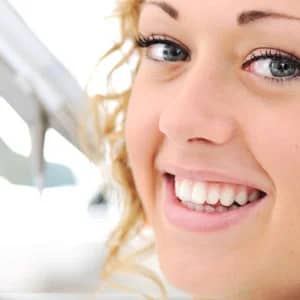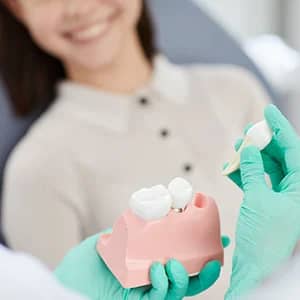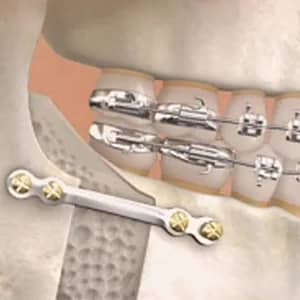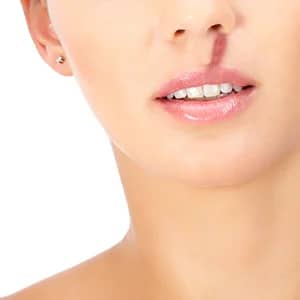Dental implants are medically graded screws that are made of zirconium or titanium that act as a replacement for the missing tooth roots. The implants stand like a strong anchor to provide the required support for the placement of dentures, dental crowns, and also bridges. This procedure involves many steps that are led by the efficient team of Dr. Kim who have years of expertise in oral surgeries.
Oral Surgery Procedures
Oral Surgery Procedures
Are you in NYC and looking for a specialized and skilled oral surgeon for any dental complications due to injuries or deformities?
Oral surgery is the procedure that corrects issues related to the jawbone, teeth, and surrounding facial structure. It is also known as maxillofacial surgery, which involves correcting injuries, defects in the facial area, and oral diseases.
A highly trained team of Dr. Kim performs oral surgeries in Highland Dental Practice that ensure relief from pain and restores facial functions by correcting deformities.
Reasons For Oral Surgery
Decayed Tooth: When tooth decay is extensive, surgery is the only way to protect other teeth from the affected Tooth.
Broken Tooth – when the Tooth is badly broken due to accidental injuries, it would need an immediate surgical extraction.
Missing Teeth: The reasons for missing teeth can be either an injury, gum disease, or a decaying tooth.
Wisdom Tooth: When there is not enough space for all the teeth, a wisdom tooth is the one to be surgically removed since it constantly tries to erupt from the jaw and causes misalignment of the other teeth.
Oral Cancer: A tumor in the teeth area can be malignant, and it has to be removed before it turns more infectious, affecting the entire teeth structure.
Cosmetic Procedures: The jaw deformities such as the prominent jaw, congenital disabilities, or even receding chin due to an asymmetrical jaw are all corrected with oral surgery.
TMJ Disease: TemporoMandibular Joint disease causes speech and bite issues that can correct only with oral surgery.
Dental Implants: When the damage to the tooth roots is irreparable, they need to be replaced with implants that act as an anchor to hold the dental crown and dental bridge.
Sleep Apnea: In sleep apnea, structural problems lead to a condition in which the person feels breathless and wakes up very often, and oral surgery is the best solution to resolve it.
Types Of Oral Surgery Procedures
Tooth Extraction
It is one of the common procedures in oral surgery. The extraction or removal of the Tooth can be due to many reasons, such as wisdom tooth issues, periodontal issues (gum diseases), decayed teeth, and even other dental infections.
Tooth extraction is required even while performing dental procedures, such as dental bridges and dentures. At times extraction is suggested by a dentist for wisdom teeth since its extraction reduces the risk of losing part of bone and even cavities. Tooth extraction becomes inevitable when the other methods of saving the Tooth do not give the required results.
Periodontal Surgery
Gum diseases can easily spread to other teeth too, so it is important to perform oral surgery to clear bacterial and fungal infections. The gums are opened with a minor incision, and the infections are flushed away by cleaning the Tooth’s roots. On completion of it, the gums are again sutured back to their position.
Dental Bone Graft
The teeth nerves get the nutrition from the brain, and when tooth loss occurs, the roots in the missing tooth area deteriorate and fail to get the required nutrition from the nerves. The bone graft will be placed to restore the space and provide the required density for the jawbone, which will help place implants or dentures.
Sleep Apnea Surgery
When the airway is blocked during sleep due to the tissues that block at the back of the throat, it is known as Obstructive Sleep Apnea (OSA). Though you can try therapies and CPAP machines, severe sleep apnea cases require surgery.
Dental Implants
Dental implants are medically graded screws that are made of zirconium or titanium that act as a replacement for the missing tooth roots. The implants stand like a strong anchor to provide the required support for the placement of dentures, dental crowns, and bridges. This procedure involves many steps led by the efficient team of Dr. Kim, who has years of expertise in oral surgeries.
Corrective Jaw Surgery
When the jawbone appears to have some disabilities in the skeleton, it is corrected by oral surgery, and this particular procedure is known as orthognathic surgery. With this surgery, the facial abnormalities are corrected, improving the chewing function of the teeth’ structure. The misaligned teeth are also corrected with oral surgery.
Cleft Lip Surgery
At times newborn babies have a facial abnormality with an opening in the upper lip known as a cleft lip. There is another abnormality known as a cleft palate that shows an opening in the roof of the mouth structure.
The oral surgeons perform surgery in the mouth area that helps the baby to have a proper biting function and develop normal speech patterns in the future.
How to Prepare for Oral Surgery?
When some prior procedures are followed a few hours before the oral surgery, it helps ensure smooth procedures and post-recovery too happens at a faster pace.
Here are some of the tips that will help you to prepare for the surgery:
- Your oral surgeon would give you a prior list of pre-op instructions, so you should read it well before making the required arrangements.
- Post-op, the recovery will not allow you to step out for even medications. Hence it is very important to stock the medications in advance to ensure their availability of medications once you are back home from surgery.
- You will not be able to drive home post-oral surgery due to the effect of anesthesia, so make sure you have a friend or a family member willing to give you a ride home.
- Oral surgical procedures require diet plans that must strictly follow to ensure smooth surgery and recovery. So head to your nearest grocery store to purchase the required stock of liquid and soft foods and avoid spicy and acidic foods.
- The dentist usually recommends fasting for at least 7-8 hours before fasting to avoid any aspiration risks during the surgical procedure.
- During the surgical procedure, there will be constant blood pressure monitoring, and a need may arise to induce IV, so ensure that you wear comfortable clothing and avoid full sleeves clothing.
- Avoid smoking for at least 12 hours before your oral surgery and 2-3 days post-surgery since it may also hinder post-procedure healing.
- Arriving at least 30 minutes before the surgical procedure gives you ample time to complete the required paperwork and have a brief discussion with your oral surgeon in case of any last-minute doubts arise.
What Is the Recovery Time of Oral Surgery Procedures?
The recovery period usually depends on how extensively the surgery is performed. Generally, it takes a week to be back on your routine, and it may take weeks if the surgical procedure is more extensive.
Dr.Kim will assist you in getting the right treatment for your dental issues. His expert team is also friendlier, and you can approach them for all your queries leaving behind all the anxiety.

Dental Implants

Wisdom Tooth Removal (3rd Molars)
To prevent any oral issues, troublesome wisdom teeth are typically pulled. A small incision is made to expose the gum tissue over the tooth and remove any bone that is covering it in order to extract a wisdom tooth. Once the tooth is seen, it is gently rocked back and forth while being held in place by a dental tool called a forceps to free it from the jaw bone and surrounding ligaments. To make it easier to remove, the tooth may occasionally need to be divided into smaller pieces. After a wisdom tooth is removed, stitches can be required.

Impacted Tooth & Tooth Exposure
A tooth that does not fully erupt through the gums is said to be impacted.
Impacted wisdom and canine teeth are pretty typical. There are a few treatment options available to address impacted teeth. The most frequent treatment for impacted wisdom teeth is extraction. There are various treatment options for impacted canine teeth. You can utilize orthodontics (braces) to create room for a proper eruption. Primary (baby) teeth can either be surgically removed or made visible so that an orthodontic bracket can be inserted to straighten the teeth.

Bone Grafting
The teeth nerves get the nutrition from the brain and when there is tooth loss, the roots in the missing tooth area deteriorate and fail to get the required nutrition from the nerves. The bone graft will be placed to restore the space and also to provide the required density for the jawbone which will help place implants or dentures.

Orthognathic Surgery
To repair misalignments or other irregularities in the upper and/or lower jaw, orthognathic surgery is performed.
Orthognathic surgery may involve techniques including bone grafting, distraction osteogenesis, osteotomies (the cutting of the bone), and orthodontic (braces) treatment. The duration of treatment for orthognathic correction might span anywhere from a few months to a year or more.
The jawbones will be moved according to the patient’s unique demands in order to complete the treatment properly. To make room for surgical plates, screws, wires, and rubber bands to be utilized to hold your jaws in their new places, inconspicuous incisions are typically created inside the mouth and, if necessary, outside the mouth.

Labial Or Lingual Frenectomies
A frenectomy is a quick surgical technique used to cut the “frenum,” a connective muscle connecting two tissues, free. For a number of reasons, adults and kids alike regularly have one of two forms of oral frenectomies.
On the tissue that joins the lip and the gums, a labial frenectomy is carried out. This can be done on adults or children to help with orthodontic treatment or even the right fit for a denture or other appliance.
Another name for a lingual frenectomy is the loosening of tongue ties (ankyloglossia). The connective tissue beneath the tongue is treated with this technique. The treatment is frequently carried out on newborn patients to help with breastfeeding, as well as on toddlers or older patients who require surgery to help rectify speech problems brought on by the frenum’s restriction of movement.

Periodontal Surgery
Gum diseases can easily spread to other teeth too so it is important to perform oral surgery to clear bacterial and fungal infections. The gums are opened with a minor incision and the infections are flushed away by cleaning the roots of the tooth. On completion of it, the gums are again sutured back to their position.
Periodontal surgery also involves the process of gum grafting when the severity of the gum disease results in loss of tissue. The dead tissues are removed and replaced with donor tissue that is taken from the roof of the mouth.

Sinus Lift
The premolar and molar regions of your mouth receive bone augmentation during a sinus lift. Where the premolar and molar teeth previously stood, an incision is created to add bone. Once the bone is seen, a little circular opening is carved out of the bone to reach the sinus. After the sinus has been reached, the sinus membrane is gradually pulled up and away from the upper jaw. After that, bone graft material is inserted into the sinus area to alter its shape and offer support. The incision is closed after the bone has been placed, and the healing process starts.

Tooth Extraction
This is one of the common procedures in oral surgery. The extraction or removal of the tooth can be due to many reasons such as wisdom tooth issues, periodontal issues (gum diseases), decayed teeth, and even other dental infections.
Tooth extraction is required even while performing some dental procedures such as dental bridges and dentures. At times extraction is suggested by a dentist for wisdom teeth since its extraction reduces the risk of losing part of bone and even cavities. Tooth extraction becomes inevitable when the other methods of saving the tooth do not give the required results.

Sleep Apnea Surgery
When the airway is blocked during sleep due to the tissues that block at the back of the throat it is known as Obstructive Sleep Apnea (OSA). Though it can be treated with therapies and CPAP machines, severe cases of sleep apnea require to be surgically operated.

Corrective Jaw Surgery
When the jawbone appears to have some disabilities in the skeleton then it is corrected by oral surgery and this particular procedure is known as orthognathic surgery. With this surgery, the facial abnormalities are corrected and also improve the chewing function of the teeth structure is. The misaligned teeth are also corrected with oral surgery.

Cleft Lip Surgery
At times newborn babies have a facial abnormality that has an opening in the upper lip known as a cleft lip. There is another abnormality known as a cleft palate that shows an opening in the roof of the mouth structure.
The oral surgeons perform surgery in the mouth area that helps the baby to have a proper biting function and also develop normal speech patterns in the future time.
Additional Procedures
1. ComprehenFacial Trauma
When there are any injuries to bone, tissues, soft tissues, skin or gums in the facial area it is known as facial trauma.
The treatment of facial trauma involves stopping bleeding, correcting the fractured bones, performing sutures on the damaged tissues and also creating clear airway post injuries. This type of treatment can be performed if there are no injuries that are life-threatening and also do not involve any fractures in the neck.
2. Oral Pathology
The mouth and jaw diseases are treated with oral pathology treatments which are also widely known as maxillofacial pathology. The treatments have modified options available according to the individual’s needs.
3. Biopsies
In the mouth area, there is a pink lining of the skin that is also smooth and is known as mucosa. When there are abnormalities observed in the skin color or even the texture of the skin then it can be a warning sign of pathology. Some of the symptoms that demand testing of the sample tissue to detect the chances of oral cancer are, a mouth sore that does not heal, the formation of lumps on the sides of the cheeks or even lump formations on the lips or the gum line.4. Cleft Lip & Cleft Palate
These refer to the splits and openings in the upper lip and also in the roof of the mouth. This facial malfunction occurs when the facial structures are not completely developed. They are primarily caused due to genetic and environmental factors. The tissues that are responsible for the formation of the lip and palate are supposed to fuse during the stages of pregnancy. When the tissues do not fuse the cleft lip and palate are formed. But surgery can resolve this issue and the surgery is performed on the baby when it is 3-6 months old.
A cleft lip can be repaired with a device named a moulding plate or the lips can be joined with lip adhesive.
The cleft palate repair is performed when the baby is of age 9-12 months. In the surgical procedure, the palate muscles are connected by taking the soft palate muscles from both sides.
Some additional surgeries may be required to enhance the lip and nose appearance and also to resolve the issues related to breathing and also stabilize the jaw. The realigning of the jaw may also need to be done which also includes straightening of teeth with the braces once the permanent teeth are completely formed.
5. Ridge Expansion
The stability of dental implants depends on the density of the jawbone. A strong jawbone structure helps in the proper placement of the implants which has a direct impact on their function and stability. Tooth loss leads to a reduction in bone density and the jawbone loses its ability to hold the implants. The ridge expansion is performed to increase the length or width of the jawbone structure with the help of bone grafting. Though it takes several months for the ridge expansion to successfully mature enough to hold the implants, it also helps in enhancing the aesthetic appearance of the face.
6. TMJ Disorders
TMJ is Temporomandibular Joint. It is a sliding hinge that connects your skull to your jawbone. The joints usually control jaw movement and also the jaw joints and TMJ disorders cause severe pain in these joints.
The TMJ disorder causes misalignment in the jawbone and skull and it can be due to reasons such as malocclusion, any injury or accidents, genetics and even due to arthritis of cartilage in the joint.
7. Sleep Disorders
Sleep disorder also known as Sleep Apnea is experienced with shallow breaths and pausing breaths. The treatment suggested for sleep apnea is lifestyle changes (reducing smoking, weight loss and clearing passages of the nasal area) and also a device that is a mouthpiece used during sleep at night. In our Highline Office, we assure to create a mouthpiece that is customized according to the requirement of the individuals. The oral device helps in unobstructed breathing by positioning the tongue and lower jaw which minimizes breathing issues.
8. Facial Cosmetic Surgery
Any physical malformations of the face are corrected with facial cosmetic surgery that involves our best surgeons. Some of the facial cosmetic surgeries performed by us are:
- Facelift
- Facial and Neck surgery
- Lip Enhancement
- Eyelid Surgery
- Nasal Reconstruction
- Ear Surgery
- Liposuction
- Cheekbone implants
- Ear Surgery
- Forehead Lift
- Brow Lift
- Chin Surgery
9. Extractions
When the tooth is highly damaged and restorative methods cannot save the tooth, the extraction has to be performed. To remove the tooth, anesthesia is injected into the tooth area and a tool named an elevator is used to loosen the tooth and extracted it with forceps. The elevator and forceps are the most commonly used tools for smooth tooth extraction. After the extraction, the sutures may be required to protect the socket area from any infections and they are self-dissolving sutures.
10. Apicoectomy
Apicoectomy is a dental procedure that involves the removal of the tip root of the tooth and also the removal of gum tissue that is affected by inflammation. The procedure is involved making a tiny incision until the tooth’s root is seen in the gum bone. The tip of the root is removed and cleaned before sealing it with a dental filling. Then the procedure is completed by putting stitches in the gums.
11. Gum Reshaping
At times the gum line is either too high or too low on the teeth structure and it hinders the appearance of the teeth. The gum reshaping procedure helps in reshaping the oddly shaped gums. The procedure begins with marking a new line on the gums for reshaping. On inducing anesthesia, the gums are reshaped with the help of a laser or the scalpel. The extra gum tissues are trimmed which enhances the overall appearance of the teeth structure.
12. Nerve Repositioning
When opting for dental implants in lower molars, sometimes there may not be sufficient bone density to hold the implants. Due to insufficient bone height, the implant procedure may get delayed. Under such a scenario, the nerve is moved out of the way to place the implants and the nerve is repositioned.
13. Socket Preservation
Due to the tooth extraction process, there is a chance for the bone to lose its density. To avoid this damage from happening that can affect the dental structure; the empty socket is filled with the bone grafting material that saves the bone from degeneration.
14. Pre-Prosthetic Surgery
This is a surgical procedure conducted to prepare the bone for performing dental prostheses. The bone is redesigned and smoothened in the edges that are required to attach a well-fitted and fully functioning dental prosthesis.
15. Distraction Osteogenesis
When there are skeletal deformities that can cause damage to health in the future. In Distraction Osteogenesis, such skeletal deformities are corrected by performing surgical procedures that involve cutting the bone surgically at a controlled rate that helps in healing and also allows the regeneration of new bone.
Specialized Techniques
1. PRGF & PRF
PRGF (Platelet Rich Growth Factors) and PRF (Platelet Rich Fibrin) are the technologically advanced methods of regenerating the tissues using the existing tissues of the patient. This helps in reducing the healing time and increasing the effective healing process.
They come in the form of materials and gel that are put directly on the extracted tooth socket areas to assist in the healing of the extracted area and also help in the regeneration of the tooth bone.
These techniques also involve the centrifugation of the blood of the patient since it contains the factors that help in the process of healing the wounds.
PRGF and PRF help in reducing bleeding, and bone regeneration and also are beneficial in the healing process.
2. Laser Surgery
Laser SurgeryLaser surgery is popularly used in dental procedures since they cause very less discomfort, and no pain and also helps in recovering quickly and easily.
Many dental procedures use laser and some of them are lesions treatment, root canal treatment, biopsy, cavities treatment, dental abscess and also in gum surgeries.
3. Bone Morphogenetic Protein (BMP)
This protein is used for stimulating the growth of the bone. It is very beneficial in dental implants procedure since it is used for regenerating the bone and also to avoid the degeneration of the bone.
FAQ
1. How long does oral surgery take?
A single tooth extraction takes roughly 30 minutes, but a more comprehensive treatment, such as corrective jaw surgery, takes at least two to three hours.
2. what are some soft foods to eat after oral surgery?
- Gentle Foods to Consume After Oral Surgery
- Eggs scrambled.
- Soup made with cream of soup and veggies.
- Smoothies and milkshakes are popular drinks.
- Yogurt that has been frozen.
- Carrots, green beans, spinach, and squash are examples of boiled or cooked vegetables.
- Cut up ripe fruits such as peaches and nectarines.
- Potatoes mashed.
- Pasta with cheese.
3. What is oral and maxillofacial surgery?
Oral & Maxillofacial Surgery is a dental specialty that encompasses the diagnostic, surgery, and adjunctive treatment of illnesses, injuries, and anomalies impacting both the functional and cosmetic elements of the oral and maxillofacial region’s hard and soft tissues.
4. Does oral surgery hurt?
Patients can expect some discomfort and irritation following oral surgery because it is an intrusive operation.
Depending on the operation, you may experience discomfort, bleeding, or edema afterward. You might be given pain medication. After the procedure, the discomfort should gradually subside.
5. Can I brush my teeth before oral surgery?
Before surgery, good oral hygiene is essential. The patient should thus take care of their teeth and gums twice a day and brush, floss, and take care of them well before the procedure. Brush your teeth and rinse with mouthwash or water the morning before the procedure.
